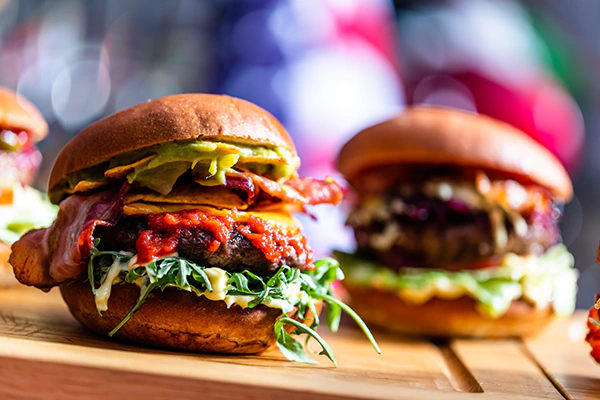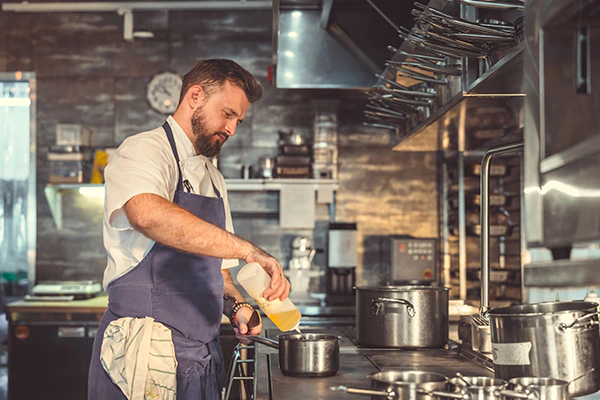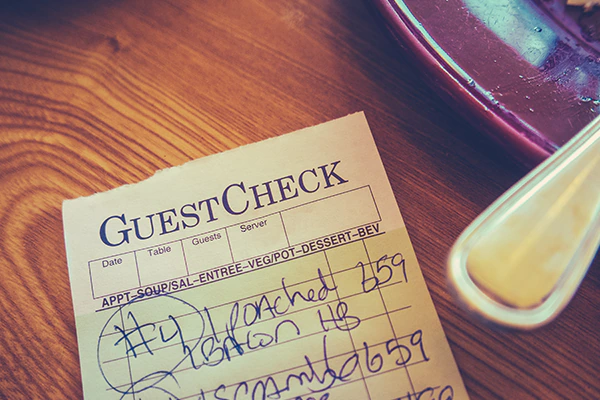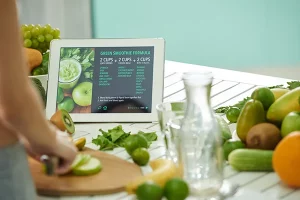In this article, we’ll discuss how to reduce food costs in your restaurant. We’ll cover what you can do to keep the cost of food down while also keeping your customers happy and maintaining a high quality of service.
Today, where competition is everywhere, and food prices are at an all-time high, reducing costs is a priority for many restaurants. Currently, the costs of ingredients are the highest they’ve ever been, and due to global pandemic and supply chain issues, these costs are going to continue to increase.
Companies need to look for areas where they can cut costs while still considering business operations and customer satisfaction. To achieve this goal we have put together some tips that will help cut these expenses while still helping ensure service levels are maintained.

Calculate Your Food Costs
Before making changes to the food you offer or where you source it, it’s important to calculate your current costs. This can tell you if there is an opportunity to save money and the extent of that savings. There are multiple ways to approach this task, but most successful restaurant operators use point-of-sale (POS) software that tracks orders and automatically calculates food costs at the end of each month.
In addition to helping track orders and costs, POS solutions help save time. With newer POS solutions wait staff can provide table-side ordering, improving their overall effectiveness and efficiency. This type of technology also helps to reduce errors and drives an improved checkout process.
Most restaurants work with the rule of thirds, where 30% accounts for food costs, 30% for staff costs, and 30% for overall profit. If your food costs exceed 30%, it’ll end up cutting into your profits and could even impact your salary costs. In that case, you could lose resources, which could have further implications that you need to account for.
Read more: Crafting Effective Dietary Supplement Labels
Be Consistent When Calculating Inventory
Knowing what you have in your inventory is essential. No one wants to do inventory, but it’s an important task that you shouldn’t delegate. Conducting a thorough inventory is the best way to know what you have on hand.
You can’t place a value on products that remain in your storeroom for too long and spoil. You need to know the exact number of items that you have in storage. If something like this slips under the wire and goes uneaten, you’re losing money.
With your planning, consider the ingredients that you’ll need daily. You have to have enough ingredients to cover what you need each day, but don’t fear running out of a dish. It’s better to have fresh food that runs out instead of using older food. If a popular dish runs out early, then that tells guests they should come earlier next time.
Inventory tools are available from your suppliers or supplier associations, as well as from third-party providers. Some restaurant software programs allow for real-time inventory tracking and monitoring. These systems let owners see exactly how much product is going in and out of their storage units or walk-in coolers at all times – including the open date – so owners know exactly when they need to know to make the right decisions.
Read more: The Difference between Recipe Costing and Food Costing

Work with Your Food Suppliers
Building good relationships with your suppliers and their staff is one of the keys in creating a successful restaurant. They know what’s in and out of season and can help you find the items you’re looking for. They also follow prices very closely and know what items will increase in cost so can work with you to provide fresh alternatives.
Here’s an insider tip. Look after the delivery guy very well. Feed him when he comes in, a sandwich and a drink will cost you almost nothing, but he’ll remember and go out of his way for you. And while he’s eating, talk to him. Find out what’s going on in the market and try and get some inside information so you can plan ahead.
You might be surprised at how much knowledge non-food employees have about food!
Read more: Your Guide to Creating Holiday Menus
Manage Your Food Orders
When ordering your ingredients, remember that costs are based on order size. Work with your chefs on creating unique dishes that are tasty and popular and give you the ability to reuse ingredients so that you can order larger quantities, helping you take advantage of volume discounts.
Realize that for every ingredient you purchase, you will need to store and maintain it properly. By minimizing the number of different ingredients you need for your dishes, you can maximize this storage, helping save time and money.
Some other tips to keep in mind are:
- Controlling your waste – You’ll need to manage your food waste. Some will be because of overproduction and some due to perishability. While it may not be possible to avoid all waste, you can control this by purchasing only what’s needed without wasting needless amounts of any product.
- Controlling wasted deliveries – When you receive your shipments, make sure that you don’t accept anything less than the best. If any product is below your standard, send it back. Over time, your suppliers will realize that you check your produce regularly and will make sure only to send the freshest. Remember, you pay for everything that you accept, and if it isn’t as fresh as you’d like, it’ll go to waste before you can use it.
Read more: Feed More or Feed Less – Scaling Recipes for Event Dining
How MenuSano can Help
A major part of controlling your food costs is in-depth recipe costing: You need to know exactly how much you’re spending per recipe and how much profit per dish is being made.
Not only does MenuSano provide a way to generate the Nutrition Labels your business needs to stay in business, but you can also add suppliers and their costs to create a detailed cost breakdown of each recipe. MenuSano will calculate the cost per yield to give you an idea of what you’re spending.
We have a free trial so you can see just how MenuSano can help you control your food costs.



















